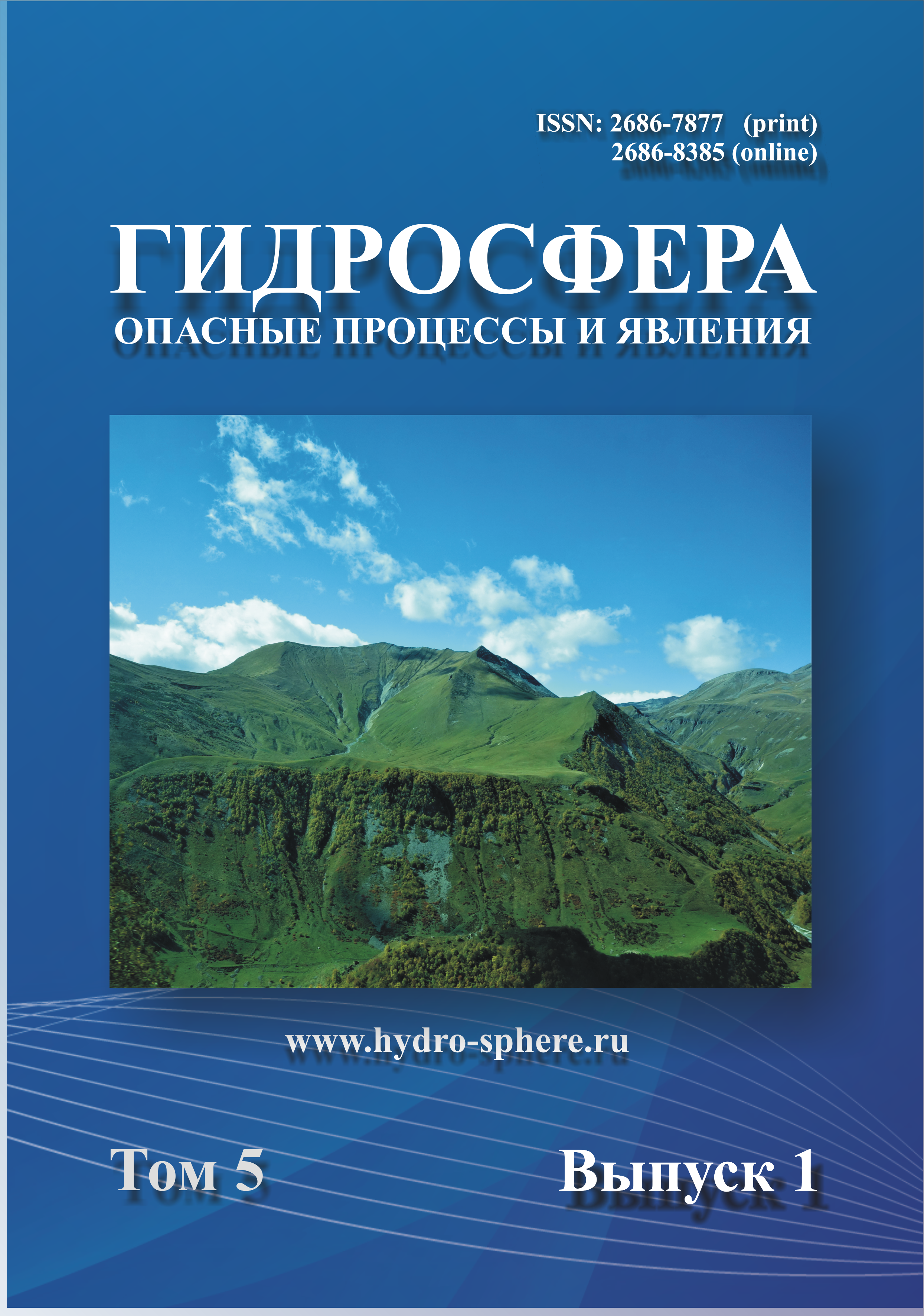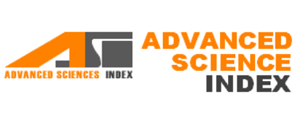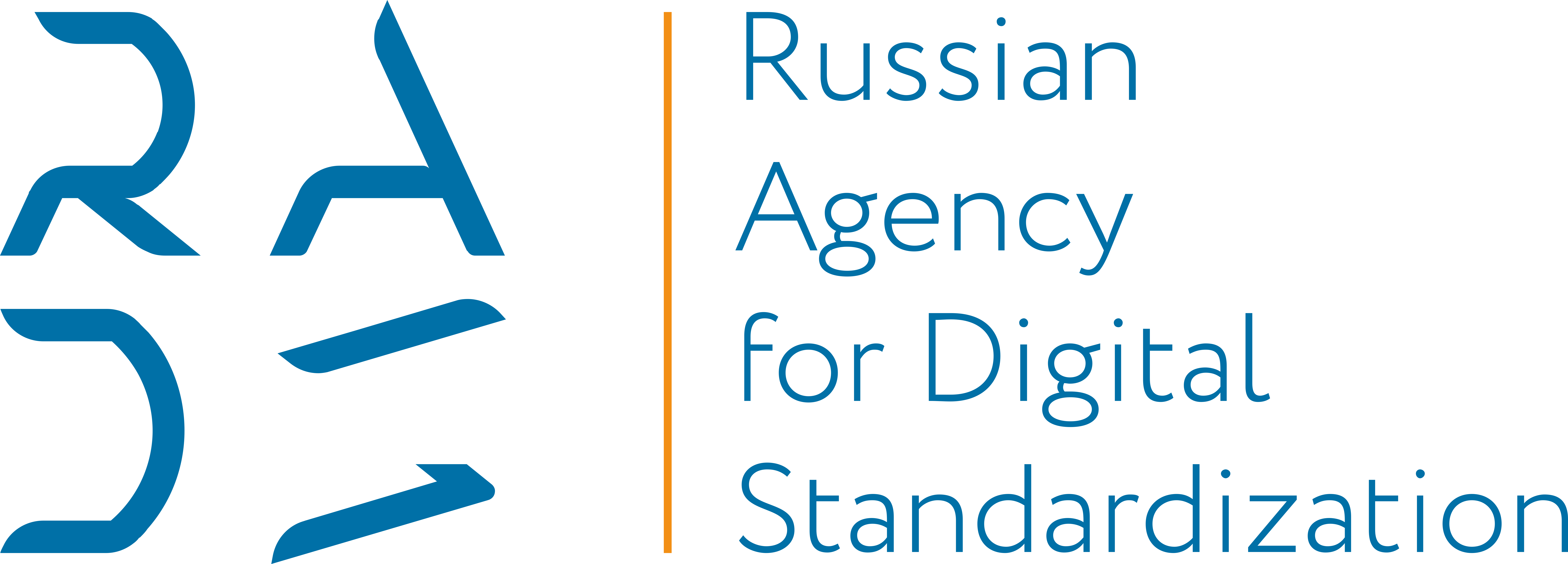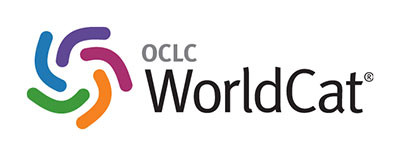The role of various factors in the arctic growth of climate warming
Authors
- Vladimir F. Loginov Institute of Nature Management of the National Academy of Sciences of Belarus
DOI:
https://doi.org/10.34753/HS.2023.5.1.34+ Keywords
+ Abstract
An exceptionally possible role of various risk factors for the Arctic risk of climate warming in the country. The temperature growth rate in high latitudes (70–90° N) decreases from 0.03° (June) to 0.23° (October). The average temperature rise at high latitude for the period from October to April, when the Arctic Ocean was covered with ice in the context of the current climate warming (1990–2022), is 4.2°C. The maximum rate of temperature increase in the period from 1990 to 2022 in October, exceeding the average annual growth rate by 1.7 times, is associated with increased latent heat inflows from the Arctic Ocean into the atmosphere. In the high latitudes of the Southern Hemisphere, the maximum rate of temperature increase was found in the month of May (end of autumn). It is also associated with an increase in turbulent flows of latent heat from the Southern Ocean into the atmosphere. The maximum rate of temperature increase in the Southern Hemisphere also occurs in autumn one month later than in the Northern Hemisphere. The paper shows the shift of maximum temperature growth rates in the northern polar cap to August-November, and in the southern one to March-May (autumn of the Southern Hemisphere). A similar shift in the maximum growth rates was previously found in the latitudinal zone 30–65° N.
A positive albedo relationship was found in patients with an increased risk of temperature increase. Approximately two-thirds of the temperature recurrence in the recovery months of the year can be explained by changes in latent heat inflows due to growth prospects. They reach the maximum values in quantity. Significant inflows of hidden income fall on the cold season. In the restoration of the months of the year, as shown in the work of G.V. Alekseev [Alekseev, Harlanenkova, Vyazilova, 2023], forms an active air exchange between the polar latitudes and breaks up into parts of the Northern Hemisphere.
+ Author Biographies
Academician of the National Academy of Sciences of Belarus, Chief Researcher of Institute for Environmental Management
Vladimir F. Loginov, Institute of Nature Management of the National Academy of Sciences of Belarus
+ References
Алексеев Г.В. Арктическое измерение глобального потепления // Лед и снег. 2014. № 2. С. 53–68. Алексеев Г.В. Натурные исследования крупномасштабной изменчивости в океане. Л.: Гидрометеоиздат, 1984. 112 с. Алексеев Г.В., Вязилова А.Е., Харланенкова Н.Е. Влияние низких широт на климатические условия на водосборах главных сибирских рек // Фундаментальная и прикладная климатология. 2020. Том 4. С. 54–67. Алексеев Г.В. Динамическое усиление глобального потепления // Труды Международной конференции памяти академика А.М. Обухова. Москва: ГЕОС, 2014. С. 290–306. Алексеев Г.В., Кузмина С.И., Уразгильдеева А.В., Бобылев Л.П. Влияние атмосферных переносов тепла и влаги на усиление потепления в Арктике в зимний период // Фундаментальная и прикладная климатология. 2016. Том 1. С. 43–63. Алексеев Г.В., Харланенкова Н.Е., Вязилова А.Е. Арктическое усиление: роль междуширотного обмена в атмосфере // Фундаментальная и прикладная климатология. 2023. Том 9, № 1. С. 13–32. DOI: 10.21513/2410-8758-2023-1-13-32. Васюта Ю.В., Мохов И.И., Петухов В.К. Чувствительность малопараметрических моделей климата к изменению характеристик меридионального переноса тепла // Изв. АН СССР. ФАО, 1988. Том 24, № 2. С. 115–125. Виноградова В.В. Зимние волны холода на территории России со второй половины ХХ века // Известия РАН. Серия географическая. 2018. № 3. С. 37–46. Дымников В.П., Филатов А.Н. Устойчивость крупномасштабных атмосферных процессов. Л.: Гидрометеоиздат, 1990. 236 с. Кац А.Л. Сезонные изменения общей циркуляции атмосферы и долгосрочные прогнозы. Л.: Гидрометеоиздат, 1960. 270 с. Логинов В.Ф. Радиационные факторы и доказательная база современных изменений климата. Минск: Беларус. навука, 2012. 266 с. Логинов В.Ф. Диагноз глобального климата. СПб.: Лема, 2021. 304 с. Логинов В.Ф., Бровка Ю.А. Периоды доминирования влияния естественных и антропогенных факторов на климат // Гидросфера. Опасные процессы и явления. 2022. Том 4. Вып. 4. С. 381–400. DOI: 10.34753/HS.2022.4.4.381. Логинов В.Ф., Лысенко С.А. Современные изменения глобального и регионального климата. Минск: Беларуская навука, 2019. с. Логинов В.Ф., Микуцкий В.С., Бровка Ю.А. Изменения скорости современного потепления климата в различные месяцы года и их возможные причины // Гидрометеорология и образование. 2023. № 1. С. 6–42. Мохов И.И. Диагностика структуры климатической системы. Л.: Гидрометеоиздат, 1993. 270 с. Мохов И.И., Мохов О.И., Петухов В.К., Хайрулин Р.Р. Влияние глобальных климатических изменений на вихревую активность в атмосфере // Изв. РАН. Физика атмосферы и океана. 1992. Том 28, № 1. С. 11–26. Семенов В.А., Латиф М. Роль колебаний площади арктического ледового покрова в формировании температурных аномалий в Арктике // Климат Арктики: процессы и изменения ; под ред. И.И. Мохова, В.А. Семенова. М.: Физматкнига, 2022. С. 115–121. Семенов В.А., Мохов И.И., Латиф М. Роль границ морского льда и температуры поверхности океана в изменениях регионального климата в Евразии за последние десятилетия // Известия РАН. Физика атмосферы и океана. 2012. Том 48, №4. С. 403–421. Теоретические и экспериментальные основы стабилизации современного климата путем создания аэрозольных образований в нижней атмосфере / Ю.А. Израэль, И.И. Борзенкова, В.А. Гулевский, Б.Г. Данельян и др.; Институт глобального климата и экологии. М., 2019. с. Федоров В.М. Инсоляция Земли и современные изменения климата. М.: Физматлит, 2018. 232 с. Alekseev G.V, Kuzmina S., Bobylev L., Urazgildeeva A., Gnatiuk N. Impact of atmospheric heat and moisture transport on the Arctic warming // International Journal of Climatology. 2019. Vol. 39, no. 8. Pp. 3582–3592. DOI: 10.1002/joc.6040. Andry O., Bintanja R., Hazeleger W. Time-Dependent Variations in the Arctic’s Surface Albedo Feedback and the Link to Seasonality in Sea Ice // Journal of Climate. 2016. Vol. 30. Pp. 393–410. DOI: 10.1175/jcli-d-15-0849.1. Bekryaev R.V., Polyakov I.V., Alexeev V.A. Role of Polar Amplification in Long-Term Surface Air Temperature Variations and Modern Arctic Warming // Journal of Climate. 2010. Vol. 23(14). Pp. 3888–3906. DOI: 10.1175/ 2010JCLI3297.1. Blackport R., Screen J.A. Insignificant effect of Arctic amplification on the amplitude of midlatitude atmospheric waves // Science Advances. 2020. Vol. 6, no. 8. DOI: 10.1126/sciadv.aay2880. Blackport R., Screen J.A., van der Wiel K., Bintanja R. Minimal influence of reduced Arctic sea ice on coincident cold winters in mid-latitudes // Nature climate change. 2019. Vol. 9. Pp. 697–704. DOI: 10.1038/s41558-019-0551-4. Cao Y., Liang S., Che X., He T., Wang D., Cheng X. Enhanced wintertime greenhouse effect reinforcing Arctic amplification and initial sea-ice melting // Scientific Reports. 2017. Vol. 7, 8462. DOI: 10.1038/s41598-017-08545-2. Clark J.P., Shenoy V., Feldstein S.B., Lee S., Goss M. The role of horizontal temperature advection in arctic amplification // Journal of Climate. 2021. Vol. 34(8). Pp. 2957–2976. DOI: 10.1175/JCLI-D-19-0937.1. Dai H. Roles of Surface Albedo, Surface Temperature and Carbon Dioxide in the Seasonal Variation of Arctic Amplification // Geophysical Research Letters. 2021. 48. e2020GL090301. DOI: 10.1029/2020GL090301. Davy R., Chen L., Hanna E. Arctic amplification metrics // International Journal of Climatology. 2018. Vol. 38, no. 12. Pp. 4384–4394. DOI: 10.1002/joc.5675. Evidence for ice-ocean albedo feedback in the Arctic Ocean shifting to a seasonal ice zone / Kashiwase H., Ohshima K. I., Nihashi S., Eicken H. // Sci. Rep. 2017. 7(1). 8170. DOI: 10.1038/s41598-017-08467-z. Goss M., Feldstein S.B., Lee S. Stationary Wave Interference and Its Relation to Tropical Convection and Arctic Warming // Journal of Climate. 2016. Vol. 29, no. 4. Pр. 1369–1389. IPCC. Climate Change 2013: The Physical Science Basis. Contribution of Working Group I to the Fifth Assessment Report of the Intergovernmental Panel on Climate Change / Eds. T.F. Stocker, D. Qin, G.-K. Plattner, M. Tignor, S.K. Allen, J. Boschung, A. Nauels, Y. Xia, V. Bex, P.M. Midgley. Cambridge, N.Y.: Cambridge University Press, 2013. 1535 p. Kulmala M., Lappalainen H.K., Zilitinkevich S. Pan-Eurasian Experiment (PEEX). Science Plan. Helsinki, 2005. 315 p. Meleshko V.P., Johannessen O.M., Baidin A.V., Pavlova T.V., Govorkova V.A. Arctic amplification: does it impact the polar jet stream? // Tellus A: Dynamic Meteorology and Oceanography. 2016. Vol. 68(1). Pp. 32330. DOI: 10.3402/tellusa.v68.32330. Mid-summer snow-free albedo across the Arctic tundra was mostly stable or increased over the past two decades / E. Plekhanova, J.-S. Kim, J. Oehri, A. Erb, C. Schaaf, G. Schaepman-Strub // Environ. Res. 2022. Lett. 17. 124026. DOI: 10.1088/1748-9326/aca5a1. Park H.S., Lee S., Son S.W., Feldstein S.B., Kosaka Y. The impact of poleward moisture and sensible heat flux on arctic winter sea ice variability // Journal of Climate. 2015. Vol. 28, no. 13. Pp. 5030–5040. Perlwitz J., Hoerling M., Dole R. Arctic tropospheric warming: causes and linkages to lower latitudes // Journal of Climate. 2015. Vol. 28. Pp. 2154–2167. DOI: 10.1175/JCLI-D-14-00095.1. Petoukhov V., Semenov V.A. A link between reduced Barents-Kara sea ice and cold winter extremes over northern continents, Journal of Geophysical Research // Atmospheres. 2010. Vol. 115, no. 21. DOI: 10.1029/2009JD013568. Pithan F., Mauritsen T. Arctic amplification dominated by temperature feedbacks in contemporary climate models // Nature Geoscience. 2014. Vol. 7. Pp. 181–184. DOI: 10.1038/ngeo2071. Serreze M.C., Francis J.A. The Arctic Amplification Debate // Climatic Change. 2006. Vol. 76. Pp. 241–264. DOI: 10.1007/s10584-005- 9017-y. Serreze M., Barry R. Processes and impacts of Arctic amplification: A research synthesis. Global and Planetary Change // Global planet change. 20011. Vol. 77. Pp. 85–96. DOI: 10.1016/j.gloplacha.2011.03.004. Smith D.M., Screen J.A., Deser C., Cohen J., Fyfe J.C., García-Serrano J., Jung T., Kattsov V., Matei D., Msadek R., Peings Y., Sigmond M., Ukita J., Yoon J.-H., Zhang X. The Polar Amplification Model Intercomparison Project (PAMIP) contribution to CMIP6: investigating the causes and consequences of polar amplification // Geoscientific Model Development. 2019. Vol. 12. Pp. 1139–1164. DOI: 10.5194/gmd-12-1139-2019. Taylor P.C., Hegyi B.M., Boeke R.C. and Boisvert L.N. On the Increasing Importance of Air-Sea Exchanges in a Thawing Arctic: A Review // Atmosphere. 2018, 9, 41. DOI: 10.3390/atmos9020041. Unraveling driving forces explaining significant reduction in satellite-inferred Arctic surface albedo since the 1980s / R. Zhang, H. Wang, Q. Fu, P.J. Rasch, X. Wang // PNAS. 2019. Vol. 116, no. 48. Pp. 23947–23953. DOI: 10.1073/pnas.1915258116. Worby A.P. and Allison I. Ocean-atmosphere energy exchange over thin, variable concentration Antarctic pack ice // Annals of Glaciology. 1991. 15. Pp. 184–190. DOI: 10.3189/1991AoG15-1-184-190. Yu L., Jin X. and Schulz E.W. Surface heat budget in the Southern Ocean from 42°S to the Antarctic marginal ice zone: four atmospheric reanalyses versus icebreaker Aurora Australis measurements // Polar Research. 2019. Vol. 38, 3349. Pp. 1–25. DOI: 10.33265/polar.v38.3349. Zhang R., Wang H., Fu Q., Rasch P.J., Wu M., Maslowski W. Understanding the cold season Arctic surface warming trend in recent decades // Geophysical Research Letters. 2021. Vol. 48, GL094878. DOI: 10.1029/ 2021GL094878.
+ Read article online
Downloads
Downloads
Published
Versions
- 2023-12-13 (2)
- 2023-12-13 (1)








1.png)




















